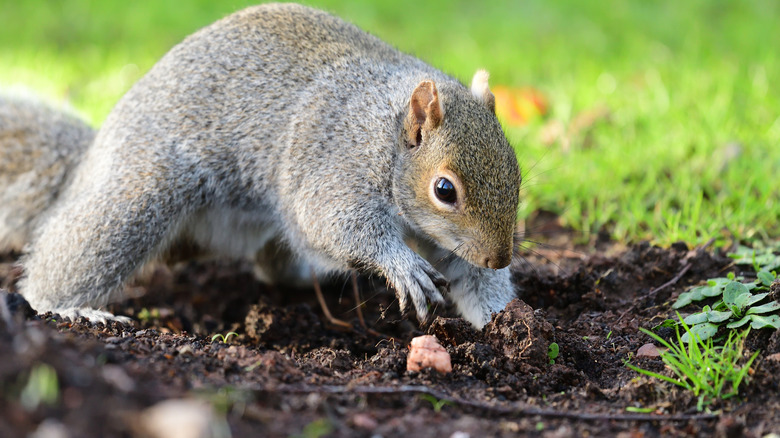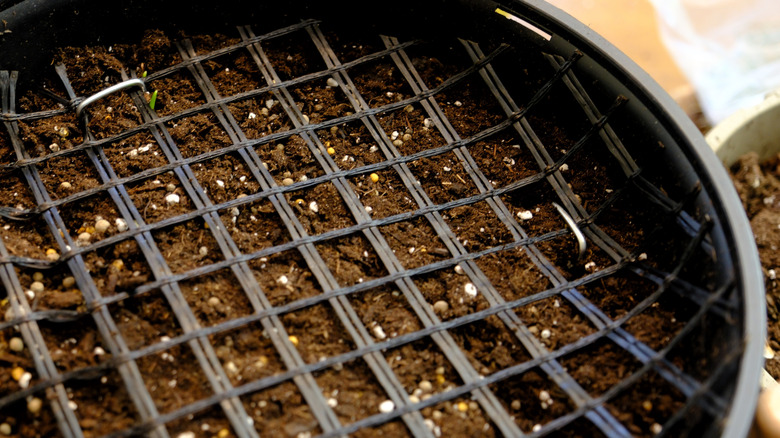Stop Squirrels From Digging Up Fall Bulbs With A Simple Method
It can be devastating to plant an array of bulbs in autumn only to have few, if any, flowers come springtime, all due to squirrels stealing your bulbs. Luckily, there are strategies to prevent squirrels from finding and devouring any of those flower bulbs that you plant. One of the best options is to simply cover the area where the bulbs are planted with a protective layer that squirrels can't dig through.
Squirrels aren't attracted to all bulbs. You can likely plant daffodils, alliums, snowdrops, and other plants that squirrels hate without providing them with any additional protection. Simply plant the flower bulbs at their recommended depth and they'll likely be left alone all winter. Just make sure you don't add any bone meal, as this can actually attract rodents.
But sometimes you want to be able to enjoy tulips or crocuses, and these plants can require a little more work to survive the winter undisturbed — as squirrels may indeed dig them up to eat them. So, you'll need to take extra steps to keep them away from your neighborhood squirrels. The spring blooms are so beautiful that it's worth the extra steps though.
Protecting your bulbs from squirrels
To protect your tulips and other bulbs that are especially appealing to squirrels, it's important to start by planting them deep enough. This means that you should plant tulips about 8 inches deep. Crocuses should be planted around 3 inches deep. Then, after you cover the bulbs with soil and mulch, you're ready to add your next layer of defense.
Properly squirrel-proofing your bulbs means you need to add sheets of material that the fluffy-tailed critters can't get through over the top of the soil. This could be chicken wire, hardware cloth, or even burlap. You can use landscape staples or rocks to keep everything in place. The same strategy works regardless of whether you're planting your bulbs in containers or directly in the ground. Just make sure to remove this protective layer in late winter or early spring so that your flowers are able to grow and you're able to enjoy your tulip landscaping.

